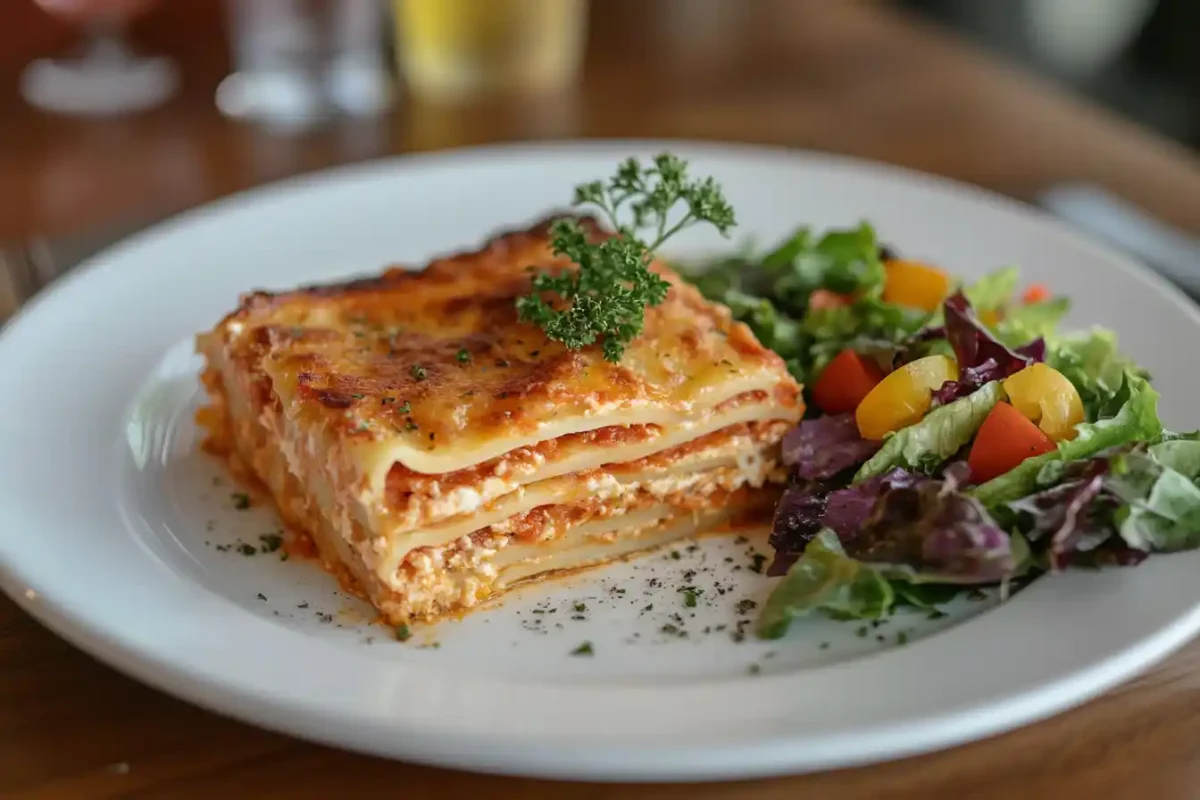Understanding Barilla’s Legacy in Pasta Making
A Brief History of Barilla
Barilla, widely recognized as a household name in pasta, has undoubtedly been a staple in Italian kitchens for over a century. In fact, this iconic brand, founded in the charming city of Parma, Italy, brings generations of culinary expertise and tradition to every single box of pasta.
Moreover, Barilla’s unwavering dedication to quality, paired with its constant pursuit of innovation, is precisely why home cooks across the globe trust Barilla for their lasagna recipes.
Whether crafting a classic dish or experimenting with modern variations, Barilla consistently delivers a product that blends authenticity with reliability, making it the preferred choice for countless kitchens worldwide.
The journey of Barilla began with a small bakery, but its focus on crafting high-quality pasta soon led to global recognition. With a blend of modern production techniques and time-honored recipes, the brand maintains its commitment to authenticity.
Barilla’s Commitment to Quality and Tradition
What sets Barilla apart is its relentless focus on using premium ingredients. Their lasagna noodles are made with 100% durum wheat semolina, ensuring a firm texture and excellent flavor absorption. This quality standard reflects in every recipe, making Barilla the go-to choice for creating lasagna that doesn’t fall apart but instead holds every layer beautifully.
By combining tradition and technology, Barilla continues to innovate while staying true to its roots. Whether you’re preparing a classic meat lasagna or experimenting with plant-based variations, their products serve as the perfect canvas for culinary creativity.
Ingredients for the Perfect Barilla Lasagna
Essential Components of a Classic Lasagna
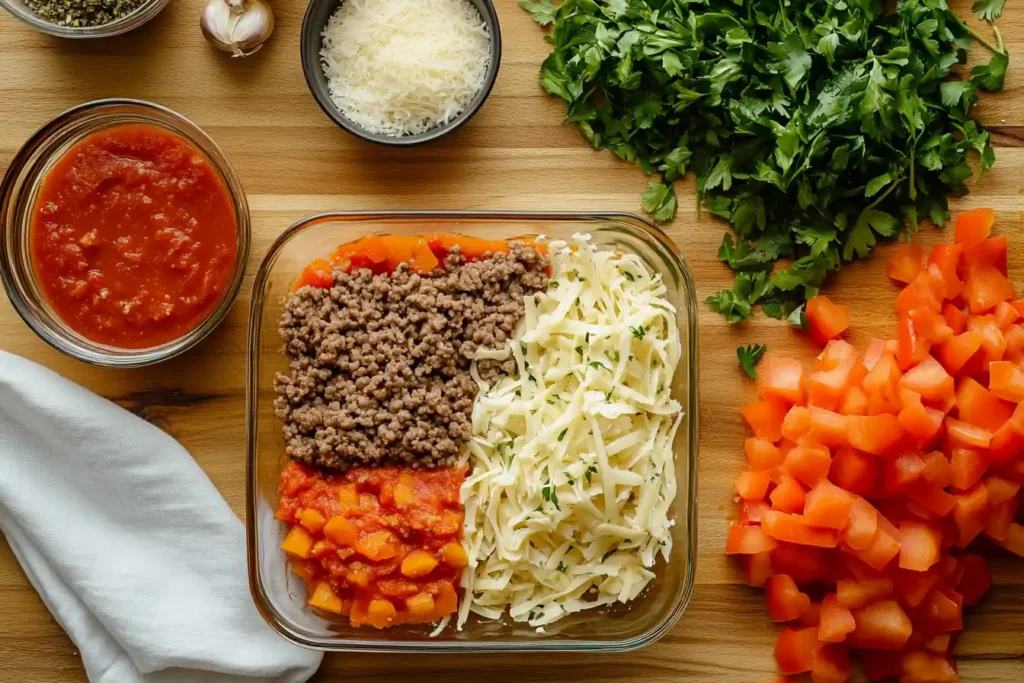
To create a mouthwatering Barilla lasagna recipe, selecting high-quality ingredients is the key to success. Each component—from the noodles to the cheese—plays a pivotal role in balancing flavors and textures. A well-prepared lasagna combines tender pasta, rich sauces, and creamy cheeses, delivering an irresistible dining experience.
Selecting the Right Barilla Lasagna Noodles
Barilla offers a range of lasagna noodles, including classic and oven-ready varieties. For traditional lasagna, opt for the regular noodles to enjoy the full process of boiling and layering. If you’re short on time, oven-ready noodles are pre-cooked and require no boiling. Both options ensure a firm texture and excellent sauce absorption, perfect for holding each layer intact.
Choosing Quality Meats for the Sauce
The foundation of an exceptional lasagna lies in its sauce, and selecting the right meat makes all the difference. Ground beef, pork, or a mix of both delivers a savory, hearty flavor.
Learn about the best cuts of beef for cooking to elevate your dish.Look for lean cuts with a balance of fat to avoid greasy results. If you prefer plant-based options, consider using soy crumbles or finely diced mushrooms for a robust and earthy taste.
Importance of Fresh Dairy Products
Dairy is the heart of lasagna’s creaminess. Use whole milk ricotta, fresh mozzarella, and a generous sprinkle of grated Parmesan for a rich and satisfying bite. Fresh dairy not only enhances the flavor but also ensures the texture is smooth and creamy, binding the layers seamlessly. Avoid processed substitutes, as they may lack the depth of flavor found in authentic ingredients.
Crafting the Ideal Meat Sauce
Traditional Bolognese Sauce Preparation
The classic Bolognese sauce is a time-honored staple in lasagna recipes. Begin by sautéing finely chopped onions, carrots, celery, and garlic in olive oil until fragrant. Add the ground meat and cook until browned, breaking it up into small pieces. Stir in tomato paste, crushed tomatoes, and a splash of vegetable stock for depth. Simmer the sauce slowly, allowing the flavors to meld beautifully.
Incorporating Authentic Italian Herbs and Spices
To elevate the flavor, season your sauce with Italian herbs like basil, oregano, and thyme. A pinch of red pepper flakes adds a subtle heat, while a bay leaf lends a deeper aroma. Freshly ground black pepper and a dash of salt bring balance to the sauce, ensuring every bite bursts with flavor. Don’t forget a touch of nutmeg for an extra layer of complexity!
Preparing the Creamy Béchamel Sauce
Step-by-Step Béchamel Sauce Recipe
Béchamel sauce adds a velvety richness to lasagna, a skill also essential for achieving creamy textures in recipes. Start by melting butter in a saucepan over medium heat. Whisk in an equal amount of flour to create a roux, cooking until lightly golden. Gradually pour in warm milk, whisking constantly to avoid lumps. Continue cooking until the sauce thickens, coating the back of a spoon. Season with salt, pepper, and a pinch of nutmeg for a subtle, nutty finish.
Tips for Achieving the Perfect Consistency
Achieving the ideal béchamel consistency requires patience. Use medium heat to avoid scorching, and whisk vigorously to eliminate any lumps. If the sauce becomes too thick, add a splash of warm milk to adjust. For a silky texture, strain the sauce through a fine mesh sieve before layering it into your lasagna. Trust me—this step makes all the difference!
Step-by-Step Preparation of Barilla Lasagna
Assembling the Lasagna Layers
Crafting the perfect Barilla lasagna recipe requires attention to detail, especially during the layering process. Each layer contributes to the balance of textures and flavors, creating the iconic lasagna experience.
Layering Techniques for Optimal Flavor
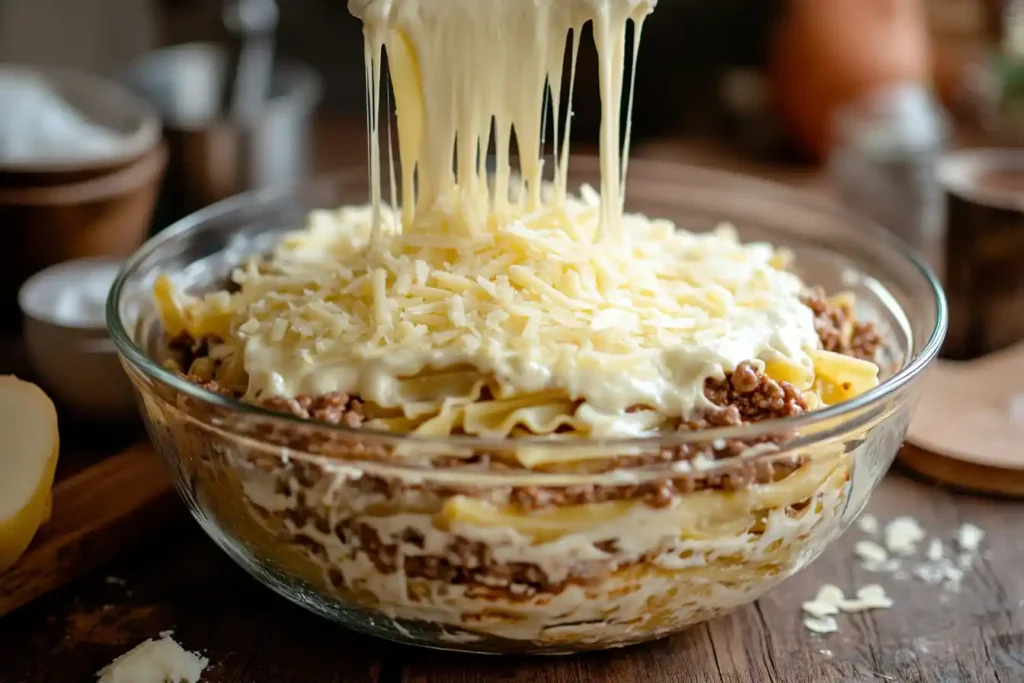
Start by spreading a thin layer of your prepared meat sauce across the bottom of your baking dish. This prevents the noodles from sticking and ensures even cooking. Next, lay Barilla lasagna noodles over the sauce, slightly overlapping them. Spread a generous layer of béchamel sauce on top, followed by dollops of ricotta cheese. Sprinkle a mix of mozzarella and Parmesan for a cheesy kick. Repeat these layers until you reach the top of the dish, ending with a final layer of cheese for a golden, bubbly finish.
Balancing Sauce and Pasta Proportions
Achieving the right balance between sauce and pasta is key to avoiding a dry or watery lasagna. Use enough sauce to fully coat the noodles but not so much that it overpowers them. A good rule of thumb is to maintain equal proportions of noodles, meat sauce, and béchamel, ensuring every bite is flavorful and satisfying.
Baking the Lasagna to Perfection
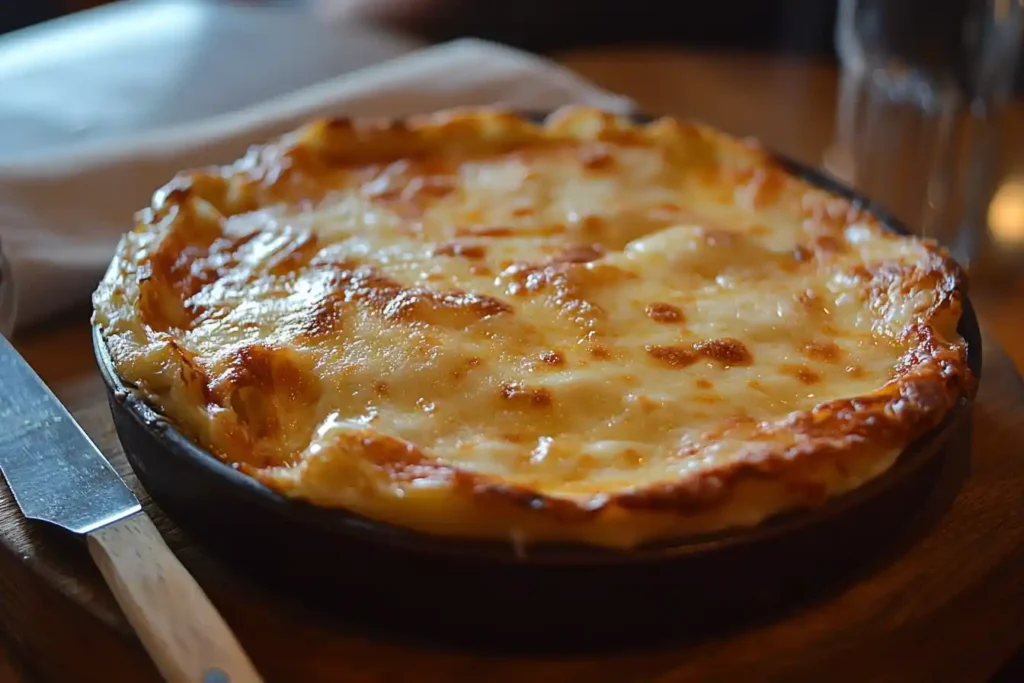
Recommended Oven Settings and Timing
Preheat your oven to 375°F (190°C) for consistent results. Cover the lasagna with aluminum foil to trap moisture, baking it for 25-30 minutes. Remove the foil and bake for an additional 10-15 minutes to achieve a beautifully browned and bubbling top layer.
Ensuring Even Cooking Throughout
To ensure even cooking, rotate the dish halfway through the baking process. Let the lasagna rest for 10-15 minutes after removing it from the oven. This allows the layers to set, making it easier to slice and serve without falling apart.
Serving Suggestions and Pairings
Ideal Side Dishes to Complement Lasagna
Pair your lasagna with a fresh garden salad tossed in a light vinaigrette. Garlic bread or a crusty loaf is another classic choice, perfect for soaking up any extra sauce, as shown in this guide to complementing your lasagna with bread. A simple steamed vegetable medley adds a nutritious touch to the meal.
Alternatives to Alcoholic Pairings
For beverages, iced tea, sparkling water with lemon, or a fruity mocktail complement the lasagna beautifully without overshadowing its rich flavors.
Variations and Tips for Barilla Lasagna
Exploring Popular Lasagna Variations
Vegetarian and Vegan Alternatives
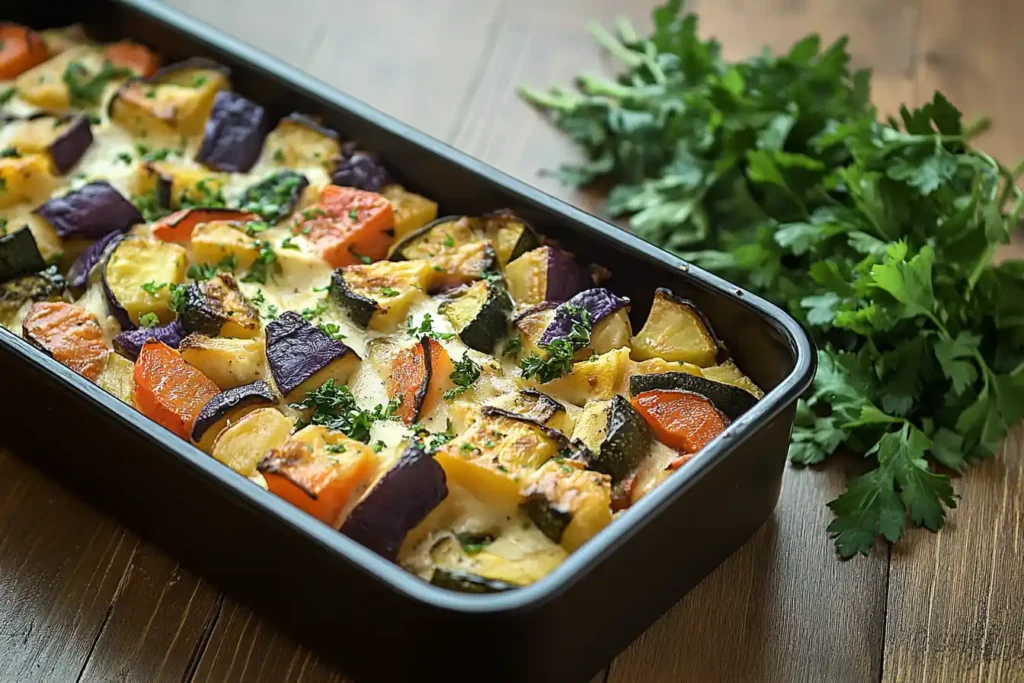
Replace the meat sauce with a hearty vegetable medley or lentil-based sauce for a vegetarian twist. For a vegan version, use dairy-free béchamel, plant-based cheeses, and Barilla’s gluten-free lasagna noodles. Incorporating roasted eggplant or zucchini slices instead of pasta adds an extra layer of flavor.
Gluten-Free Options with Barilla Products
Barilla’s gluten-free lasagna noodles are a fantastic option for those with dietary restrictions. Pair them with naturally gluten-free ingredients like ricotta, mozzarella, and homemade tomato sauce for a safe yet indulgent dish.
Common Mistakes to Avoid
Preventing Overcooked or Undercooked Pasta
To prevent overcooking, don’t boil lasagna noodles for too long if you’re using traditional ones. For oven-ready noodles, ensure there’s enough moisture from the sauce to cook them thoroughly.
Achieving the Right Sauce Consistency
Watery sauces can ruin the structure of your lasagna. Simmer the sauce long enough to thicken it, but avoid making it overly dense, which could dry out the dish.
Enhancing Flavor with Fresh Ingredients
Utilizing Fresh Herbs and Spices
Fresh basil, oregano, and parsley not only enhance the flavor of your lasagna but also elevate it to restaurant-quality levels effortlessly. To maximize their impact, finely chop these fresh herbs and, without skipping a beat, carefully mix them into your sauces and cheeses. This simple step ensures every bite delivers a vibrant burst of freshness, seamlessly tying together the rich and creamy elements of the dish. Moreover, using fresh herbs instead of dried ones adds a layer of authenticity, creating a lasagna that tastes as if it came straight from an Italian kitchen.
The Impact of High-Quality Cheeses
Opt for freshly grated Parmesan and whole milk mozzarella for a richer flavor profile. Avoid pre-shredded cheese, which may contain anti-caking agents that affect melting. A sprinkle of Pecorino Romano can also add a sharp, salty edge to the dish.
Frequently Asked Questions (FAQs) About Barilla Lasagna
It depends on the type of Barilla lasagna noodles you’re using. Traditional Barilla lasagna noodles require boiling for 8–10 minutes before assembling your lasagna. However, Barilla offers oven-ready lasagna sheets that don’t require pre-boiling. These sheets are specially pre-cooked and dry flat, allowing them to soften as the lasagna bakes, saving you time while ensuring a perfect texture.
Layering lasagna is all about balance and flavor distribution. The traditional method starts with a thin layer of sauce at the bottom of the dish to prevent sticking. Then alternate layers as follows:
Lasagna noodles
Meat sauce or vegetable sauce
Béchamel or ricotta cheese
Grated mozzarella and Parmesan cheese
Repeat these layers until the dish is filled, finishing with a generous topping of sauce and cheese. This order ensures even cooking, structural integrity, and a deliciously golden crust on top.
For best results, bake lasagna covered for the first portion of the cooking time. Covering the dish with aluminum foil traps moisture, allowing the noodles to cook thoroughly and evenly. For the last 10–15 minutes of baking, remove the foil to brown the top layer of cheese. This dual approach prevents drying out while achieving a beautiful, bubbly crust.
Lasagna sheets are flat, rectangular pieces of pasta often used in authentic Italian recipes. These sheets may require boiling or can come oven-ready. Lasagna noodles, on the other hand, are typically ridged and slightly thicker. While both are excellent for layering, sheets often result in a smoother texture, while noodles provide a heartier bite. With Barilla lasagna, you can choose the style that best suits your recipe and personal preference.
Conclusion: Embracing the Art of Lasagna Making with Barilla
Creating the perfect Barilla lasagna recipe is more than just a cooking endeavor—it’s a celebration of tradition, quality, and family gatherings. By carefully selecting premium ingredients, mastering layering techniques, and avoiding common pitfalls, you can craft a lasagna that’s as authentic as it is delicious.
From the robust flavors of a traditional Bolognese sauce to the creamy indulgence of béchamel, each element contributes to the harmony of this iconic dish. Whether you stick to the classic recipe or explore creative variations like vegetarian or gluten-free options, Barilla’s commitment to quality ensures your lasagna will always be a success.
So, gather your ingredients, follow the steps, and don’t be afraid to make it your own. With Barilla at the heart of your recipe, every bite will transport you to the warmth of an Italian kitchen, filled with the love and care that defines this timeless dish. Buon appetito!
To better understand the nutritional value of Barilla lasagna recipe, here’s a breakdown of the average content per 100 grams, including calories, macronutrients, and key vitamins. This information can help you plan a balanced meal.
| Nutrient | Amount per 100g | % Daily Value* |
|---|---|---|
| Calories | 220 kcal | 11% |
| Total Fat | 9 g | 14% |
| Saturated Fat | 4 g | 20% |
| Cholesterol | 35 mg | 12% |
| Sodium | 350 mg | 15% |
| Total Carbohydrates | 22 g | 7% |
| Dietary Fiber | 2 g | 8% |
| Sugars | 4 g | – |
| Protein | 12 g | 24% |
| Vitamin A | 500 IU | 10% |
| Calcium | 150 mg | 15% |
| Iron | 1.5 mg | 8% |

